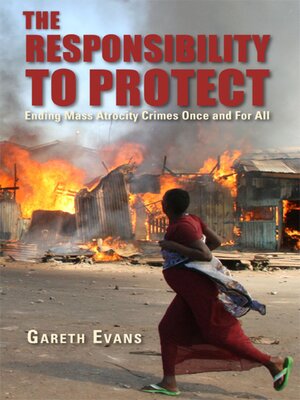
Sign up to save your library
With an OverDrive account, you can save your favorite libraries for at-a-glance information about availability. Find out more about OverDrive accounts.
Find this title in Libby, the library reading app by OverDrive.



Search for a digital library with this title
Title found at these libraries:
| Library Name | Distance |
|---|---|
| Loading... |
"Never again!" the world has vowed time and again since the Holocaust. Yet genocide, ethnic cleansing, and other mass atrocity crimes continue to shock our consciences—from the killing fields of Cambodia to the machetes of Rwanda to the agony of Darfur.
Gareth Evans has grappled with these issues firsthand. As Australian foreign minister, he was a key broker of the United Nations peace plan for Cambodia. As president of the International Crisis Group, he now works on the prevention and resolution of scores of conflicts and crises worldwide. The primary architect of and leading authority on the Responsibility to Protect ("R2P"), he shows here how this new international norm can once and for all prevent a return to the killing fields.
The Responsibility to Protect captures a simple and powerful idea. The primary responsibility for protecting its own people from mass atrocity crimes lies with the state itself. State sovereignty implies responsibility, not a license to kill. But when a state is unwilling or unable to halt or avert such crimes, the wider international community then has a collective responsibility to take whatever action is necessary. R2P emphasizes preventive action above all. That includes assistance for states struggling to contain potential crises and for effective rebuilding after a crisis or conflict to tackle its underlying causes. R2P's primary tools are persuasion and support, not military or other coercion. But sometimes it is right to fight: faced with another Rwanda, the world cannot just stand by.
R2P was unanimously adopted by the UN General Assembly at the 2005 World Summit. But many misunderstandings persist about its scope and limits. And much remains to be done to solidify political support and to build institutional capacity. Evans shows, compellingly, how big a break R2P represents from the past, and how, with its acceptance in principle and effective application in practice, the promise of "Never






